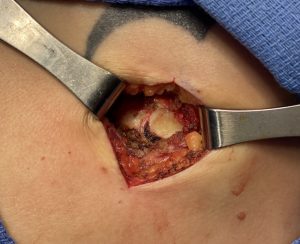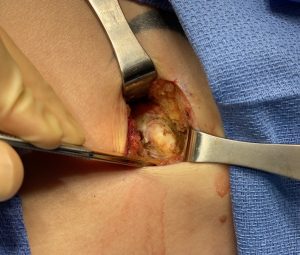Trauma to the ribcage is a not uncommon event. Most of the time blunt trauma causes bruising and swelling otherwise known as contusions to the ribcage. But in some cases fractures of the ribs can also occur. While the bony arc of the ribs can be fractured, a very common site of fracture is the costochondral junction.
The costochondral junction is where the bony ribs wrap around the ribcage and becomes cartilaginous with the sternum and subcostal ribcage. This junction is the weak point of the rib and can be dislocated or separated if exposed to trauma at just the right angle and amount of force. In some cases the costochondral junctional separation never heals and becomes a source of chronic discomfort due to mobility. In other cases it heals but creases a painful raised bump.

It is interesting why a healed costochondral junction would serve as a source of discomfort. Chronic mobility is easy to understand as a source of pain but a solid union across the junction is less clear as to why. It may be that the bump represents a healed junctional deformity which abnormally effects the intercostal nerve that runs beneath it or the prominent bump sticks out and is more sensitive to the touch. Either way shaving is down to a contour in line with the adjoining rib tissue serves to reduce/eliminate the discomfort.
Dr. Barry Eppley
Indianapolis, Indiana



